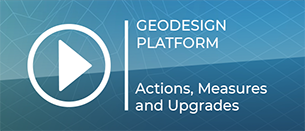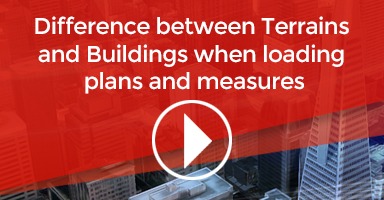Measure: Difference between revisions
| Line 38: | Line 38: | ||
* [[How to edit measure events]] | * [[How to edit measure events]] | ||
==See also== | |||
[[File:QA_verschil_terrains_buildings_measures_wiki.jpg | link=https://www.tygron.com/nl/2020/04/17/wat-betekent-het-verschil-tussen-terrains-en-buildings-voor-het-inladen-van-plannen-en-measures/]] | [[File:QA_verschil_terrains_buildings_measures_wiki.jpg | link=https://www.tygron.com/nl/2020/04/17/wat-betekent-het-verschil-tussen-terrains-en-buildings-voor-het-inladen-van-plannen-en-measures/]] | ||
Revision as of 12:02, 5 October 2022
Measures
A measure is an action or plan which can be performed to (partially or completely) complete a task or accomplish a goal.
How measures relate to the Tygron Platform
In the Tygron Platform, measures are predefined actions that can be performed by stakeholders. In contrast to other actions, such as the placement of constructions, a participant in a project session does not define any properties for the measure. Instead, they can only opt to perform the measure as it has been defined in the editor. However, this means that measures can be made more complex, to more closely resemble a real world situation or scenario.
When to use measures
A measure can be used to offer predefined plans to stakeholders. When a plan exists, applicable to the case implemented in the project, that plan can be implemented as a measure. Such a plan can consist of the spatial effects of the plan, as well specific costs, and other eventual consequences of implementing that plan.
A measure doesn't need to have a spatial effect. Instead, it can also be used to represent a policy change or campaign, which may have consequences for indicators, or may trigger events.
Measures can also be activated via events. This means that a measure does not necessarily need to be enacted by a stakeholder, but can also be activated, for example, by answering a message, by reaching a certain point in a cinematic, or even by enacting or canceling another measure. If any of these occurrences should have a spatial consequence or an effect on an indicator, a measure can also be used to define these consequences.
(In Dutch)
Advanced usage of measures
Because measures can have a large variety of effects, and can be activated via events, measures can be extremely powerful. Correctly using measures can allow an editing user to create very intricate or specific effects in a project. This does tend to make a project more complex, but can have benefits both for the maintainability of a project, as well as for the sense of realism for the session participants.
Not showing spatial effects
Normally, when a user select a measure in their action menu, the spatial effects of that measure are shown. This means locations on the map where the measure has its effect are highlighted, and the user's camera is moved to that location. However, this may not always be necessary or desirable. To prevent this, it is possible to implement the measure as two measures. A first measure, with the proper costs and description, which the stakeholder will see in the action menu. A second measure is not directly visible to the stakeholder, but has the actual spatial effect. The first measure can then, upon activation, trigger the activation of the second measure.
Reusing spatial effects
Using the above principle, it is also possible to reuse spatial effects. If multiple measures would have the same spatial effect, it is possible to have an additional measure in which the actual spatial effect is defined. All measures which should have that spatial effect can trigger the additional measure. This has the benefit of being easier to maintain if the spatial effect needs to change. Any change to the plan would only require a change to a single measure, instead of all measures which have the same effect.
Creating a spatially dynamic world
Because a measure can also be set to automatically activate on a given date, it is also possible to use measures to cause things to happen in the 3D world on predefined dates. This means that, as time progresses, buildings in and around the construction area can appear and disappear. Effects on indicators can also be added or removed at various points in time.
Creating and editing measures
Measures have a large number of properties. Depending on the complexity of the measure you intend to create, a variety of panels may need to be used to properly configure all properties of a measure.
- How to add and remove measures
- How to edit general measure properties
- How to edit measure cost details
- How to edit measure events
See also
(In Dutch)


